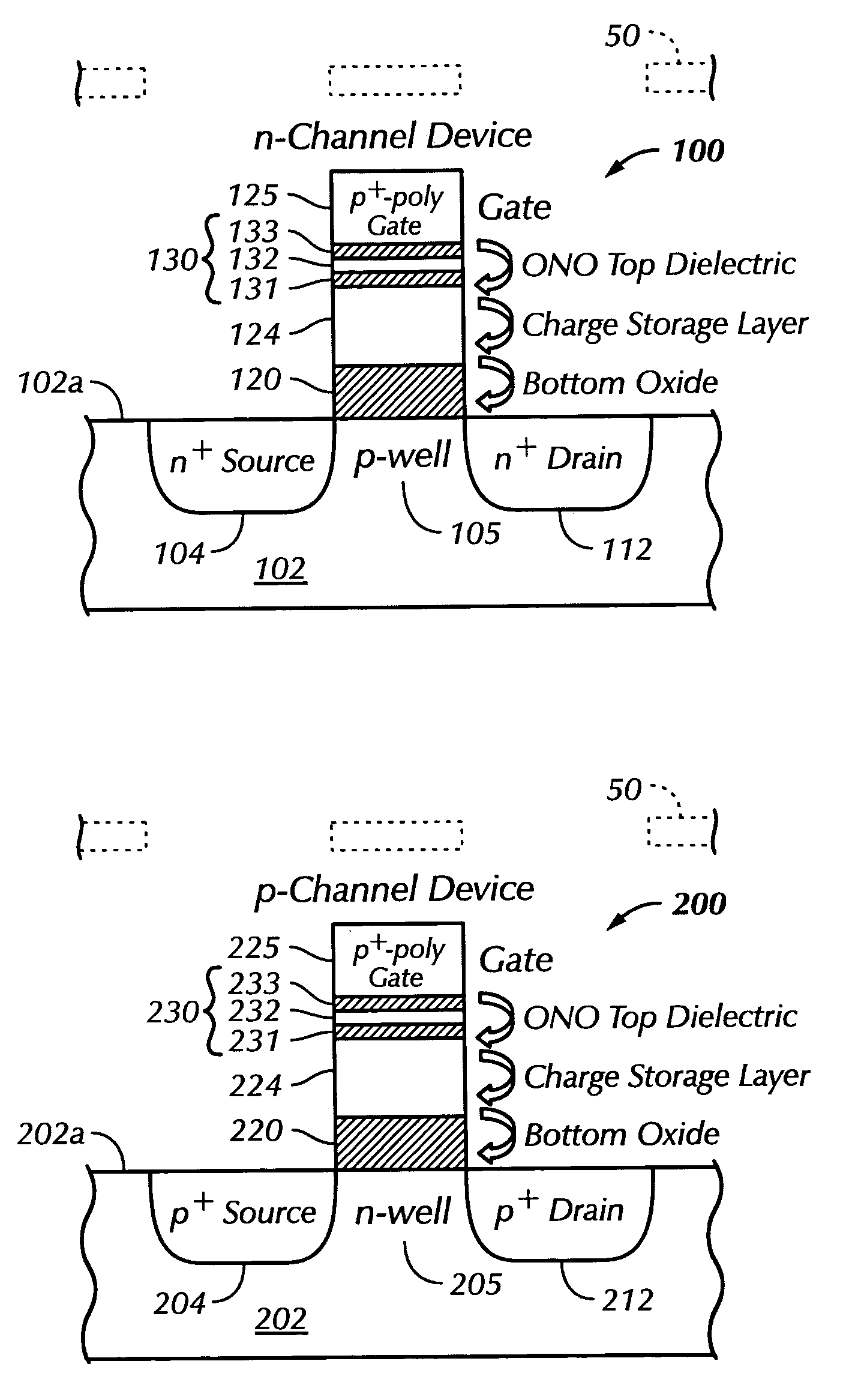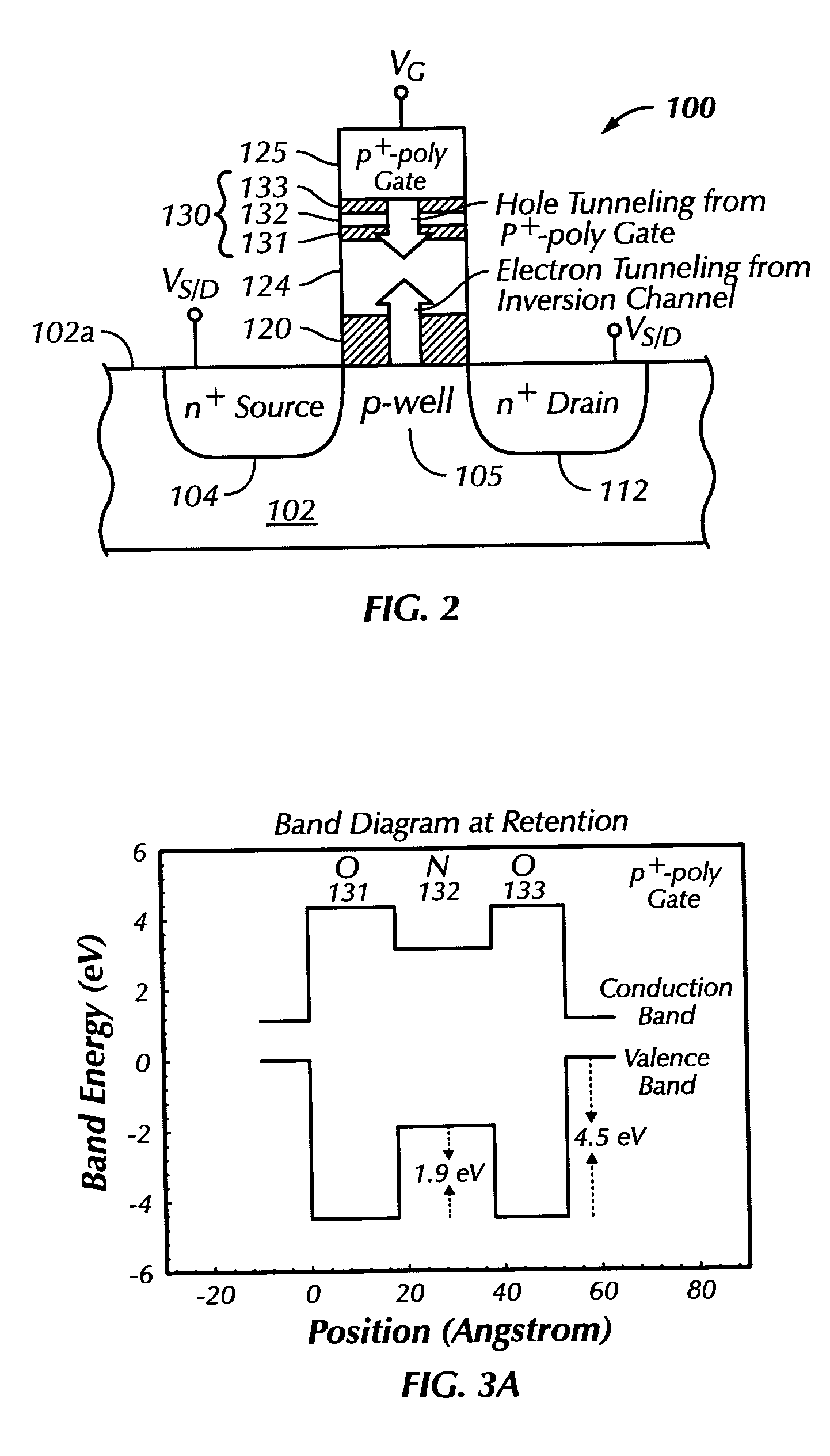Non-volatile memory semiconductor device having an oxide-nitride-oxide (ONO) top dielectric layer
a semiconductor device and non-volatile technology, applied in semiconductor/solid-state device manufacturing, semiconductor devices, semiconductor devices, etc., can solve the problems of negative impact on the time it takes to erase a memory cell, charge loss after many program/erase cycles, and degradation of nrom devices
- Summary
- Abstract
- Description
- Claims
- Application Information
AI Technical Summary
Benefits of technology
Problems solved by technology
Method used
Image
Examples
Embodiment Construction
[0024] Certain terminology is used in the following description for convenience only and is not limiting. The words “right”, “left”, “lower”, and “upper” designate directions in the drawing to which reference is made. The words “inwardly” and “outwardly” refer direction toward and away from, respectively, the geometric center of the object described and designated parts thereof. The terminology includes the words above specifically mentioned, derivatives thereof and words of similar import. Additionally, the word “a,” as used in the claims and in the corresponding portions of the specification, means “at least one.”
[0025] One (1) micron or micrometer (μm) is 10,000 Angstroms (Å) or 1000 nanometers (mn).
[0026] As used herein, reference to conductivity will be limited to the embodiment described. However, those skilled in the art know that p-type conductivity can be switched with n-type conductivity and the device would still be functionally correct (i.e., a first or a second conduct...
PUM
 Login to View More
Login to View More Abstract
Description
Claims
Application Information
 Login to View More
Login to View More - R&D
- Intellectual Property
- Life Sciences
- Materials
- Tech Scout
- Unparalleled Data Quality
- Higher Quality Content
- 60% Fewer Hallucinations
Browse by: Latest US Patents, China's latest patents, Technical Efficacy Thesaurus, Application Domain, Technology Topic, Popular Technical Reports.
© 2025 PatSnap. All rights reserved.Legal|Privacy policy|Modern Slavery Act Transparency Statement|Sitemap|About US| Contact US: help@patsnap.com



